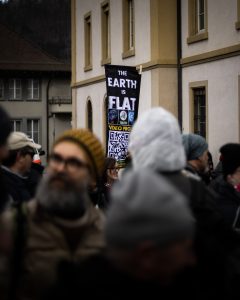
Symptoms of the looming climate crisis abound: 50-year extreme heat events happening every year, melting of polar ice sheets, forest fires that encircle the globe, tropical cyclones of greater size, intensity and, as was very evident in Hurricane Ida’s recent visit to New York, unprecedented levels of precipitation. These are all expected outcomes of the increasing quantities of greenhouse gases we have been pumping into the atmosphere, and they are going to get worse. Nothing we are doing suggests that we will keep global temperatures within 2°C of pre-industrial levels—a goal of the Paris Agreement. An increase of 2°C would be extremely unpleasant. An increase of 5°C by 2100—predicted by some of the business-as-usual models and compatible with our current trajectory—would be planet-changing. Temperatures will not stop rising just because we have hit the arbitrary cut-off point of 2100, and what may happen thereafter is truly frightening.Solving the impending crisis requires amending our energy choices, but we must appreciate how restricted our options are. Any energy choice ultimately lives or dies by its EROI: energy returned on (energy) invested. A seam of coal might supply a given quantity of energy. Against this there is the amount of energy we must invest to extract it—energy expended by miners, energy put into building tools, etc. The EROI of this coal is the ratio of the energy it yields to the energy we invested in its extraction. Both material and social features of a society depend on the EROI of its energy sources. To maintain a society recognizably akin to ours in terms of its material comforts is estimated to require an EROI in the range 11-14. To maintain a society with some of the hallmarks of successful liberal democracies—high scores on the Human Development Index, childhood health, gender equality, female literacy—may require a societal EROI of around 25.Mitigating climate change while maintaining energy sources with the required EROIs. . .
News source: OUPblog » Philosophy
Post Views: 121







